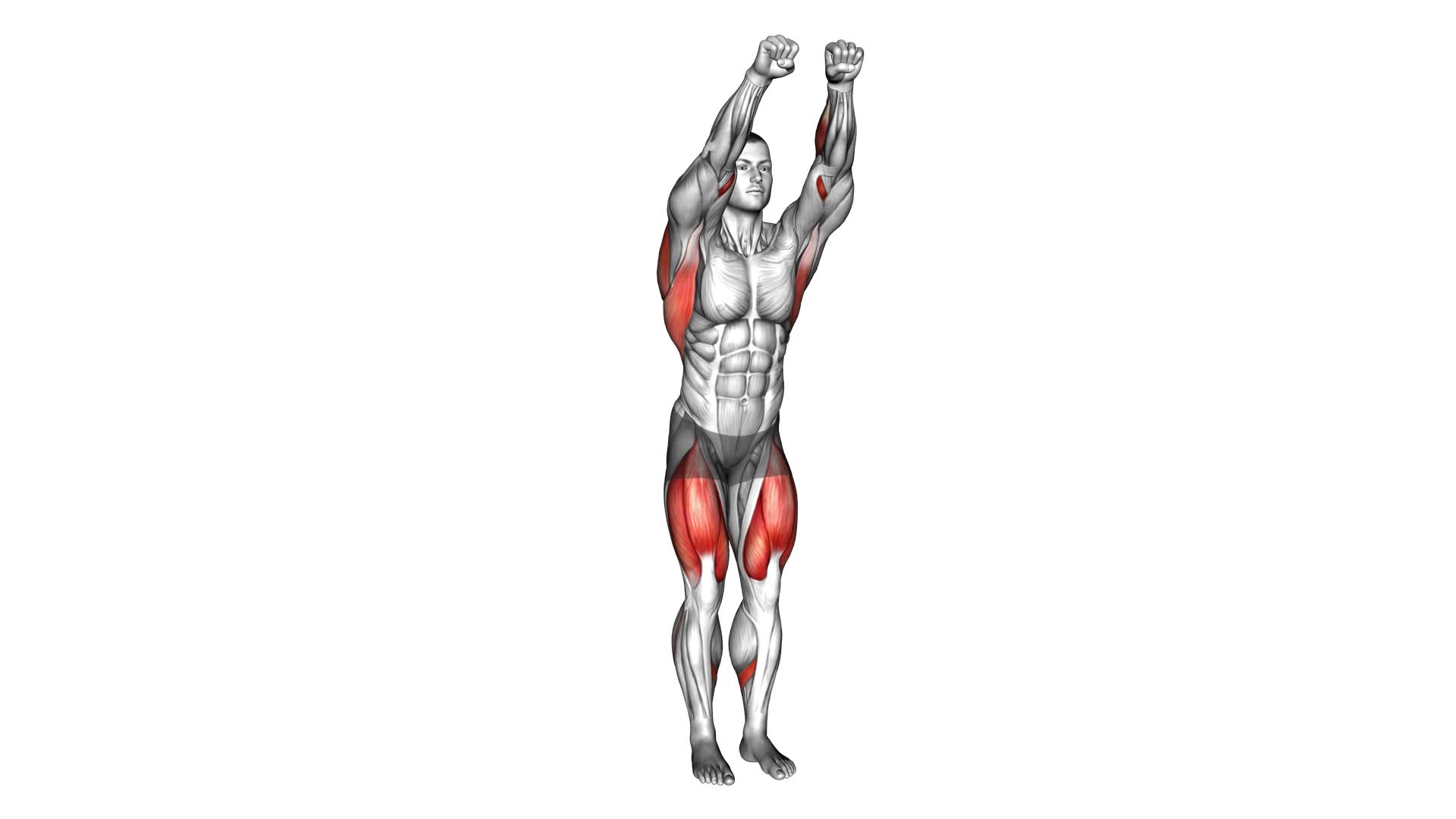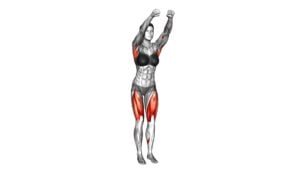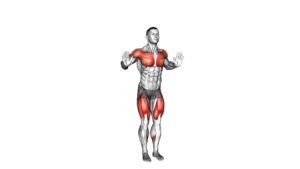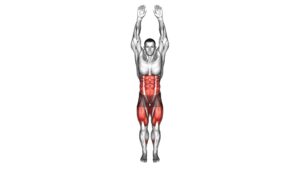Stepback Pulldown (male) – Video Exercise Guide & Tips

Are you looking to strengthen your back muscles and improve your upper body strength? Look no further than the Stepback Pulldown.
Watch This Exercise Video
In this video exercise guide, we'll show you the proper technique and give you tips to get the most out of this exercise. Whether you're a beginner or a seasoned fitness enthusiast, this guide will help you master the Stepback Pulldown and achieve the results you desire.
Let's get started!
Key Takeaways
- Stepback pulldown targets multiple muscle groups including the latissimus dorsi, biceps, and shoulders.
- It helps improve upper body strength and enhances the appearance of back muscles.
- Proper alignment and technique are important for maximizing effectiveness and safety.
- Stepback pulldowns can improve posture and pulling strength for various activities and sports.
Benefits of the Stepback Pulldown
To maximize your upper body strength and improve your back muscles, incorporate the Stepback Pulldown into your workout routine. This exercise targets multiple muscle groups, making it a great addition to any upper body workout.
The primary muscles worked during the Stepback Pulldown are the latissimus dorsi, or the lats, which are the large muscles in your back that give you that V-shaped appearance. Additionally, your biceps and shoulders are also engaged during this exercise, helping to strengthen and tone those areas as well.
For advanced users, there are variations of the Stepback Pulldown that can be incorporated to further challenge your muscles. One variation is to use a resistance band instead of a pulldown machine. This allows for a greater range of motion and requires more stabilization from your core muscles.
Another variation is to perform the exercise with one arm at a time, using a dumbbell or kettlebell. This unilateral movement helps to correct any muscle imbalances and adds an extra challenge to your workout.
Incorporating the Stepback Pulldown into your routine will help you build upper body strength and improve the appearance of your back muscles. Give it a try and start seeing the results you desire.
Proper Equipment and Setup
To ensure a successful Stepback Pulldown workout, it's important to have the right equipment and set it up correctly.
As a beginner, you have a few options for equipment, such as resistance bands or a pulldown machine.
Regardless of the equipment you choose, it's crucial to focus on proper alignment and technique to maximize the effectiveness of the exercise.
Equipment Options for Beginners
For proper equipment and setup as a beginner, you need to start with the right options. When it comes to equipment options for beginners, there are a few key things to consider.
First, choose a pulldown machine that's suitable for your height and body type. Look for one that allows you to adjust the seat and handles to your comfort level. Additionally, make sure the machine has a weight stack that's appropriate for your current strength level. It's important not to overload yourself when you're just starting out.
Lastly, don't forget about safety features such as a secure footplate and stable frame. By selecting the right equipment, you'll be setting yourself up for success in your stepback pulldown workout.
Now, let's move on to the next section and talk about correct setup techniques.
Correct Setup Techniques
When setting up for the stepback pulldown exercise, ensure that you have the proper equipment and setup to support your workout goals. Here are three important things to keep in mind for correct technique and to avoid common errors:
- Adjust the seat height: Make sure the seat is at a height that allows your feet to be flat on the ground. This will provide stability and prevent any unnecessary strain on your lower back.
- Grip the bar correctly: When gripping the bar, your hands should be slightly wider than shoulder-width apart. This will help target your back muscles effectively and prevent excessive strain on your wrists.
- Set the weight stack: Start with a weight that challenges you but allows you to maintain proper form. Avoid using too much weight, as it can lead to incorrect technique and increase the risk of injury.
Importance of Proper Alignment
Ensure that your equipment and setup are aligned properly to maximize the effectiveness and safety of the stepback pulldown exercise.
Proper alignment is of utmost importance in this exercise as it helps you maintain the correct form and reduces the risk of injury.
When setting up for the stepback pulldown, make sure that your feet are firmly planted on the ground and shoulder-width apart. Adjust the seat height so that your knees are at a 90-degree angle.
Grip the bar with your hands slightly wider than shoulder-width apart. Maintain a neutral spine throughout the exercise and engage your core muscles.
Step-By-Step Guide for Performing the Exercise
Now let's go over the important points to keep in mind while performing the Stepback Pulldown exercise.
First, focus on maintaining proper form throughout the movement to effectively target your muscles.
Second, be aware of common mistakes to avoid, such as using momentum or not engaging the correct muscles.
Technique Tips: Proper Form
To perform the Stepback Pulldown exercise with proper form, start by gripping the bar with an overhand grip.
Here are some technique tips to ensure you're performing the exercise correctly:
- Engage your back muscles: Make sure to squeeze your shoulder blades together as you pull the bar down towards your chest. This will help you target the muscles in your upper back.
- Maintain a stable position: Keep your chest up and your core engaged throughout the exercise. Avoid using momentum or swinging your body to complete the movement.
- Control the movement: Lower the bar in a slow and controlled manner, feeling the tension in your back muscles. Avoid jerking or using excessive force, as this can lead to injury.
Common Mistakes: Avoid These
Avoiding common mistakes is essential when performing the Stepback Pulldown exercise. By being mindful of these errors, you can avoid injury and maximize your results.
One common mistake is using excessive momentum to complete the movement. Remember to control the weight and focus on the targeted muscles.
Another mistake is neglecting proper form. Ensure that your back is straight, shoulders are pulled back, and elbows are tucked in during the exercise.
Additionally, using too much weight can compromise your form and increase the risk of injury. Start with a weight that allows you to maintain proper technique and gradually increase as you become stronger.
By avoiding these mistakes, you can perform the Stepback Pulldown effectively and reap the benefits of improved muscle activation.
Now, let's move on to the next section to understand the benefits of this exercise and how it activates different muscles.
Benefits: Muscle Activation Explained
By controlling the weight and focusing on the targeted muscles, you can effectively perform the Stepback Pulldown exercise and experience improved muscle activation. Here are three benefits of muscle activation and some exercise technique tips to help you maximize your results:
- Increased muscle recruitment: The Stepback Pulldown targets the muscles in your back, specifically the latissimus dorsi, rhomboids, and trapezius. By activating these muscles, you can strengthen and tone your upper body.
- Improved posture: This exercise helps strengthen the muscles that support your spine, promoting better posture. As you retract your shoulder blades and engage your back muscles, you can reduce the risk of developing rounded shoulders or a hunched posture.
- Enhances pulling strength: The Stepback Pulldown is a compound exercise that involves pulling a weight towards your body. By regularly performing this exercise, you can increase your pulling strength, which can be beneficial for various activities and sports.
Remember to maintain proper form and control the weight throughout the movement to maximize muscle activation and prevent injury.
Common Mistakes to Avoid
You can prevent common mistakes by maintaining proper form during the Stepback Pulldown exercise. One common mistake to avoid is improper breathing techniques. It's important to exhale as you pull the bar down and inhale as you release it back up. This helps to stabilize your core and provide the necessary support for the movement.
Another mistake to avoid is using weights that are too heavy or too light for your fitness level. It's recommended to start with a weight that allows you to perform 8-12 reps with proper form. This ensures that you're challenging your muscles without sacrificing your technique.
Additionally, it's important to avoid relying solely on your arms to perform the exercise. The Stepback Pulldown is a compound movement that engages multiple muscle groups, including your back, shoulders, and core. To maximize the effectiveness of the exercise, focus on engaging these muscle groups and using them to power the movement.
By avoiding these common mistakes and maintaining proper form, you can enhance the benefits of the Stepback Pulldown and reduce the risk of injury.
Now, let's move on to the next section which discusses modifications and variations for different fitness levels.
Modifications and Variations for Different Fitness Levels
To cater to different fitness levels, modifications and variations can be incorporated into the Stepback Pulldown exercise. Here are three options to consider:
- Modifications for Beginners: If you're new to strength training or have limited upper body strength, you can start with assisted pulldowns using a resistance band. Attach the band to the pull-up bar, place your knees on a bench, and pull the band towards your chest. This modification allows you to gradually build strength and improve your form before progressing to the standard stepback pulldown.
- Advanced Variations: For those looking to challenge themselves and take their strength training to the next level, there are several variations to try. One option is to incorporate a single-arm pulldown, focusing on one side of the body at a time. Another variation is the kneeling stepback pulldown, where you kneel on one knee and perform the exercise with the opposite arm. This variation engages the core muscles and provides a different stimulus to your back muscles.
- Weighted Stepback Pulldown: Once you have mastered the basic form and have built sufficient strength, you can add additional resistance to the exercise. This can be done by using a weight belt or holding a dumbbell between your feet. The added weight challenges your muscles even further, helping you to continue progressing and achieving your fitness goals.
Remember to always listen to your body, start with an appropriate level of difficulty, and gradually increase the intensity as you become more comfortable and proficient with the exercise.
Tips for Maximizing Results and Preventing Injury
To maximize your results and prevent injury during the Stepback Pulldown exercise, focus on maintaining proper form and using controlled movements. By following these tips, you can ensure that you're getting the most out of your workout while also reducing the risk of injury.
Firstly, make sure to keep your back straight and your core engaged throughout the exercise. This will help you maintain stability and prevent straining your lower back. Additionally, avoid using momentum to perform the exercise. Instead, use a slow and controlled motion to target the muscles effectively.
It is also crucial to pay attention to your grip. Make sure your hands are positioned shoulder-width apart and avoid gripping the bar too tightly. This will help distribute the load evenly and prevent unnecessary strain on your wrists and forearms.
To maximize gains and prevent injury, it's important to start with a weight that you can comfortably handle. Gradually increase the weight as you progress to challenge your muscles without compromising your form.
Lastly, listen to your body. If you experience any pain or discomfort during the exercise, stop immediately and consult a professional. Remember, proper form and controlled movements are key to maximizing your gains and preventing injury during the Stepback Pulldown exercise.
Frequently Asked Questions
How Many Sets and Reps Should I Do for the Stepback Pulldown Exercise?
For the stepback pulldown exercise, it's important to focus on both sets and reps. The number of sets and reps you should do depends on your fitness level and goals. Generally, aim for 3-4 sets of 8-12 reps. This will help build strength and muscle endurance.
However, it's always a good idea to consult with a fitness professional to ensure you're using proper form and technique. Some common mistakes in the stepback pulldown variations include using too much weight and not engaging the back muscles properly.
Can I Perform the Stepback Pulldown Exercise With Resistance Bands Instead of a Cable Machine?
Yes, you can definitely perform the stepback pulldown exercise with resistance bands instead of a cable machine. Using resistance bands offers a different type of resistance compared to cable machines, which can help to challenge your muscles in a unique way.
The stepback pulldown exercise targets your back muscles, particularly the lats, and can help to improve your overall upper body strength and posture.
Incorporating resistance bands into this exercise can provide added variety and allow for more flexibility in your workouts.
Is the Stepback Pulldown Exercise Suitable for Beginners?
The stepback pulldown exercise is a great option for beginners. It helps you build upper body strength and targets your back muscles. By performing this exercise, you can improve your posture and increase your overall strength.
However, there are some common mistakes to avoid, such as using momentum instead of controlled movements. Remember to engage your core and keep your shoulders down and back throughout the exercise.
Can I Incorporate the Stepback Pulldown Exercise Into a Full-Body Workout Routine?
You can definitely incorporate the stepback pulldown exercise into your full-body workout routine.
It offers a variety of variations that target different muscle groups, making it a versatile addition.
By incorporating the stepback pulldown, you can strengthen your back, shoulders, and arms while also engaging your core.
This exercise provides numerous benefits, including improved posture and upper body strength.
Are There Any Specific Muscles That the Stepback Pulldown Exercise Targets?
The stepback pulldown exercise targets specific muscles in your upper body. It primarily works your latissimus dorsi, which are the large muscles in your back. Additionally, it engages your biceps, rhomboids, and rear deltoids.
This exercise is great for building strength and improving posture. There are variations of the stepback pulldown that you can try, such as using different grip positions or adding resistance bands for an extra challenge.
Conclusion
In conclusion, the stepback pulldown is a beneficial exercise for strengthening the upper body. By following the proper equipment setup and step-by-step guide, you can effectively perform this exercise and avoid common mistakes.
It's important to modify and vary the intensity based on your fitness level and always prioritize safety to prevent injury.
By incorporating these tips, you can maximize your results and achieve your fitness goals.

Author
Years ago, the spark of my life’s passion ignited in my mind the moment I stepped into the local gym for the first time. The inaugural bead of perspiration, the initial endeavor, the very first surge of endorphins, and a sense of pride that washed over me post-workout marked the beginning of my deep-seated interest in strength sports, fitness, and sports nutrition. This very curiosity blossomed rapidly into a profound fascination, propelling me to earn a Master’s degree in Physical Education from the Academy of Physical Education in Krakow, followed by a Sports Manager diploma from the Jagiellonian University. My journey of growth led me to gain more specialized qualifications, such as being a certified personal trainer with a focus on sports dietetics, a lifeguard, and an instructor for wellness and corrective gymnastics. Theoretical knowledge paired seamlessly with practical experience, reinforcing my belief that the transformation of individuals under my guidance was also a reflection of my personal growth. This belief holds true even today. Each day, I strive to push the boundaries and explore new realms. These realms gently elevate me to greater heights. The unique combination of passion for my field and the continuous quest for growth fuels my drive to break new ground.







